|
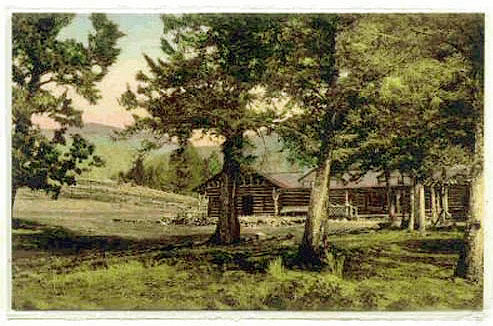
Holm Lodge, Cody Road
Col. Cody was not the first to utilize the what was to become the Cody Road as a means of access to bring
tourists into the Park. A short distance east of the Pahaska Lodge was the Holm Lodge operated by Aron "Tex" Holm.
Holm constructed the Lodge in 1898 and commenced carrying tourists from Cody on camping
expeditions into Yellowstone.
Photo Montage, Holm Lodges, 1912.
In 1903, Holm formed the Holm Transportation Co. which provided
transportation to Yellowstone by stagecoach and later by motorbus.
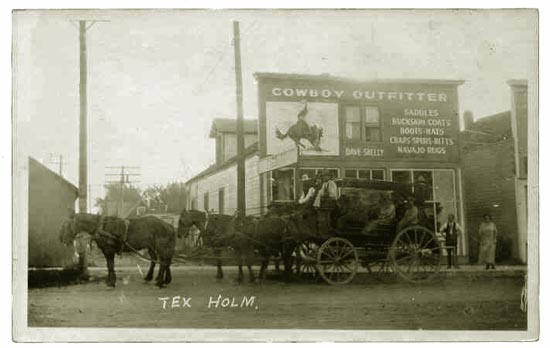
Tex Holm's stage in Cody.
By 1912 Holm operated two other permanent lodges
within Yellowstone.
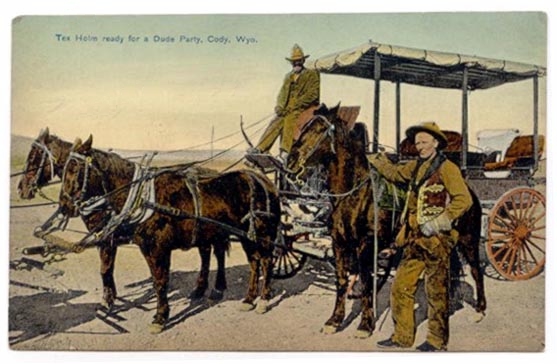
Tex Holm.
In 1914, the original lodge building on the Cody Road burned and the
remnants of the facility were sold to J. W. "Billy" Howell who reconstructed the
lodge facilites.
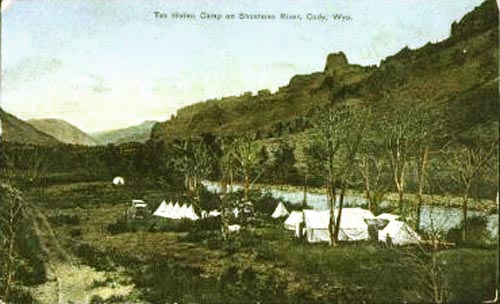
Tex Holm's Camp along the Shonshone.
Howell's main lodge building burned on March 19, 2004. Holm also provided
camping expeditions into Jackson Hole and the Sunlight Basin. At the end of the
1916 season, the National Park Service consolidated all concessionaire services within the
Park and Holm discontinued all of his operations in the Park.
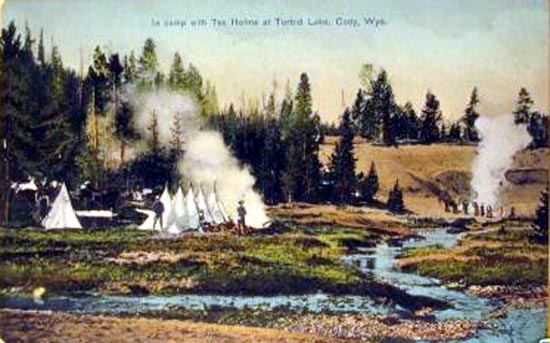
Tex Holm's Camp at Turbid Lake in Yellowstone.
Turbid Lake is located near the northeast corner of Lake Yellowstone, south of Pelican
Creek. The lake is a crater formed approximately 8,000 years ago by a hydrothermal explosion; that is
an explosion of steam and boiling water. It is believed that as the weight of glacers was relieved by their
retreat some 15,000 years ago, steam and boiling water which had been corked up much as
soda pop, exploded forming some 6 to 10 craters within Yellowstone. No release of magma was
associated with the explosions. Similar conditions are believed to possibly exist beneath
Lake Yellowstone.
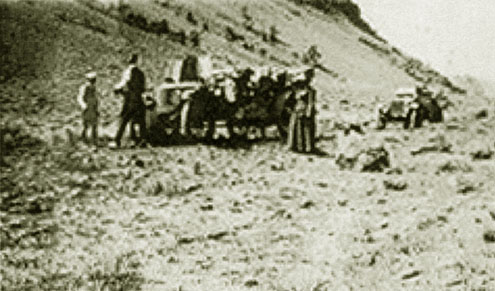
Car Trouble on Cody Road, approx. 1909.
Next Page: Cody Road continued, John B. Goff.
|